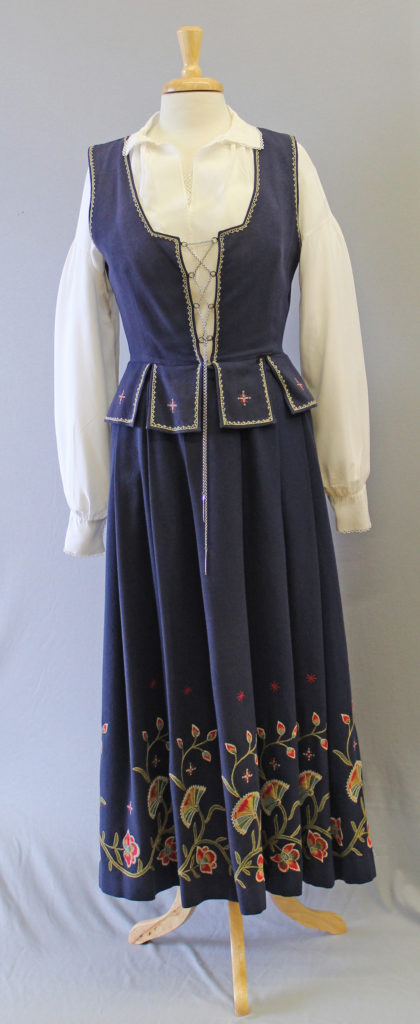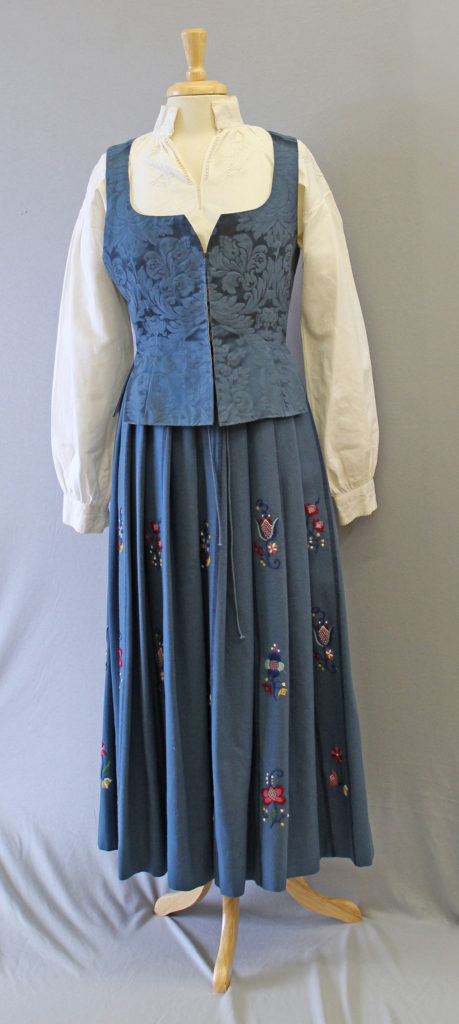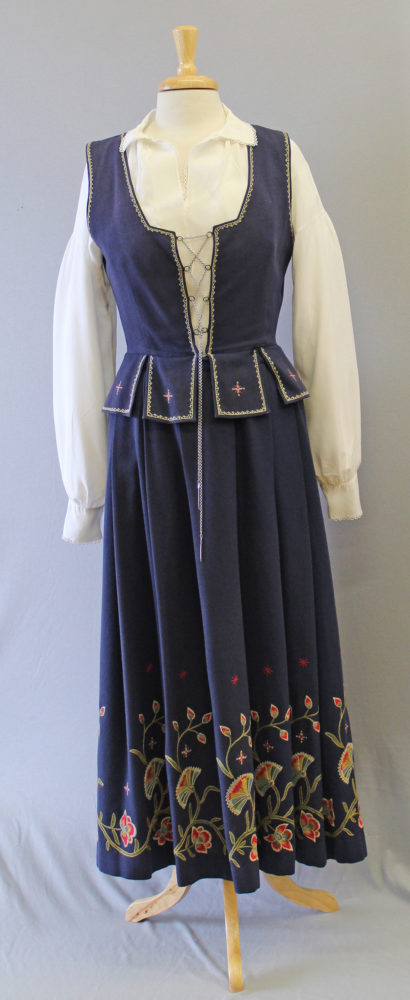Beautiful in blue: A look back at the history of Norwegian traditional wear


The Emily Reynold’s Historic Costume Collection is comprised of 5,000 pieces of historic dress, located on the fourth level of the Family Living and Learning Center.
Piece of the week will function as an opportunity to dig deeper into the collection; to highlight the cultural, historical and regional significance of the Emily Reynold’s Historic Costume Collection and to expand on the specific history of items in the collection.
This week, the collection highlights two beautiful Norwegian Bunad’s, each donated by a different family. The pristine dresses held in the collection function as a perfect example of Norwegian traditional wear.
The bunad was first reintroduced into Norwegian traditional wear in the early twentieth century by Hulda Garborg (1862-1934). Garborg was an accomplished writer, having written over forty books. She was proud to be Norwegian and rekindled the spirit of traditional cuisine, attire, theatre and folk dances.
Because of Hulda Garbog’s efforts, the bunad was reintroduced to Norwegian culture and once again stands as a crucial symbol of what it truly means to be Norwegian.
Traditional dress as exemplified in the photos; often vary in color, material and embroidery. All depending on which region the dress originated from and the owner’s personal style.
The collection has acquired two bunads that in fact, when comparing the two, perfectly reveals the differences among them. One of the dresses is from Hadeland and the other from Hedmark (Hadeland and Hedmark are located in different regions of Norway.)
The first bunad in the Costume Collection was donated by Beverly Slotten earlier this year. Her bunad traces its origins from Hedmark, Norway where it was made and worn when visiting Hamar, Norway; where her mother was born.
The traditional wear’s vest is close-fitted in blue brocade with a complimenting blue blouse and has embroidered loops etched along the edge. The skirt has a row of hand-embroidered flowers in multi-colored wool that are hand-stitched around the skirt in beautiful hues of red, blue and yellow.
The second bunad was donated by Karen Kruse earlier this year.
The outfit was originally worn by Kari Dihle in Hadeland, Norway up until 1979. The embroidery on the skirt, cap and purse were all done by Kari’s husband, Hans Dihle. The bunad then traveled to the “American cousins,” where it had remained until earlier this year. The family members would often take turns wearing the bunad to special functions, including wearing it to cultural events at the Hjemkomst Center.
The dress finally made it to Karen in 1998; she wore it with pride in style shows and the Helendale Lutheran Church Centennial service.
This bunad is also made from blue wool with multi-colored hand embroidery on the skirt, cap and purse. This piece reflects the style of bunads in the region of Hadeland and is often worn with great pride.
Throughout the examination of Norwegian traditional dress, this can show the important relationship between costume and the establishment of cultural identity.
